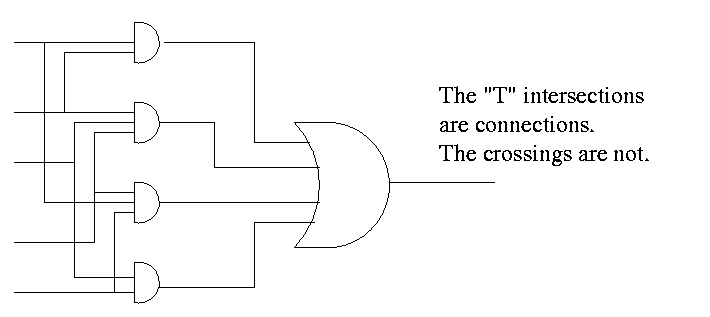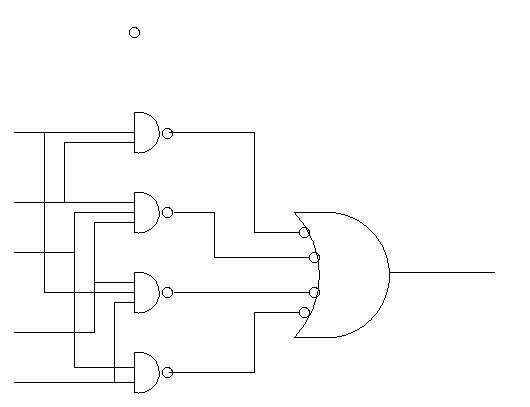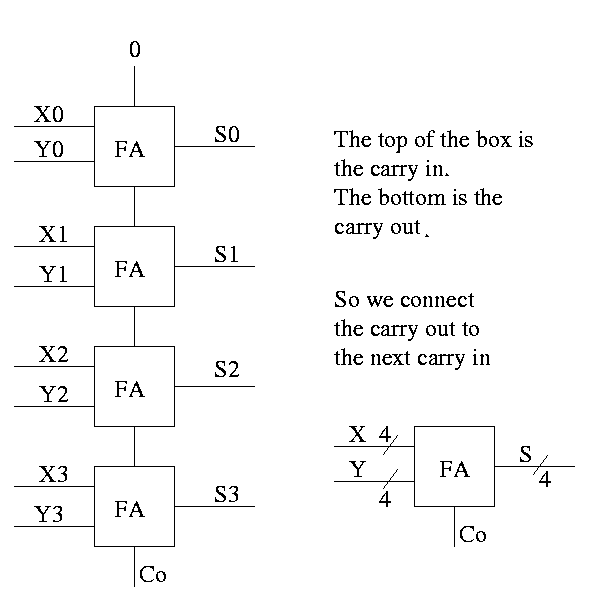======== START LECTURE #3
========
Homework:
B-12. Assume you have constant signals 1 and 0 as well.
Decoder

- Note the ``3'' with a slash, which signifies a three bit input.
This notation represents three (1-bit) wires.
- Takes n signals in produces 2^n signals out
- View input as ``binary n'', the output has n'th bit set
- Implement on board with AND/OR
Encoder
- Reverse "function" of encoder
- Not defined for all inputs (exactly one must be 1)
Sneaky way to see that NAND is universal.
- First show that you can get NOT from NAND. Hence we can build
inverters.
- Now imagine that you are asked to do a circuit for some function
with N inputs. Assume you have only one output.
- Using inverters you can get 2N signals the N original and N
complemented.

- Recall that the natural sum of products form is a bunch of ORs
feeding into one AND.

- Naturally you can add pairs of bubbles since they ``cancel''

- But these are all NANDS!!
Half Adder
- Inputs X and Y
- Outputs S and Co (carry out)
- No CarryIn
- Draw TT
Homework: Draw logic diagram
Full Adder
- Inputs X, Y and Ci
- Output S and Co
- S = #1s in X, Y, Ci is odd
- Co = #1s is at least 2
Homework:
- Draw TT (8 rows)
- show S = X XOR Y XOR Ci
- show Co = XY + (X XOR Y)Ci

How about 4 bit adder ?

How about n bit adder ?
- Linear complexity
- Called ripple carry
- Faster methods exist






